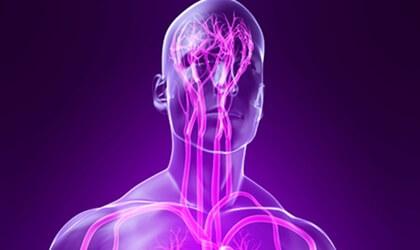Relax after an effort or stressful situation. Adjust your heart rate after a scare or stroke. Relax our lungs by reducing oxygen consumption and promoting a state of calm?All these essential processes of our daily lives are regulated and controlled by an essential part of our body: the parasympathetic nervous system.
We recently talked in our space about the sympathetic nervous system and its participation in other types of behaviors: those related to activation, the physiological response to a threat, stress, etc. In this case, we are talking about the part of the autonomous nervous system that facilitates the restoration of body energy. In any case, these nerve fibers and branches perform tasks without conscious control.
- Although it sounds quite simple.
- The theme is much more interesting than what is thought.
- In fact.
- Knowing how this type of structure works facilitates the understanding and construction of the knowledge of who we are as we are.
- As well as discovering how we can intervene to promote our health and well-being.
- An example of this is explained by some studies conducted by Harvard Medical University and published in the scientific journal Music Perception.
According to this work, music has a therapeutic impact on the parasympathetic nervous system in people who present changes in this area, this means improving their activities and functions, this effect can undoubtedly be explained by the ability of music to motivate calm relaxation, thus mediating the activation characteristic that defines this system. Let’s see more data below.
“Just like the bone of the human body, the axis of the wheel, the wing of the bird, the air of the wing, so is freedom for the essence of life. If it is not present, is there any imperfection ?. José Martín-
As mentioned above, the parasympathetic nervous system is part of the autonomous nervous system, now, to get a better idea of where it is, you have to understand the organization of the brain, is that where it is, at least in part?part that controls the branches of the system through a series of nerves.
Then we also need to understand another area, the area of the spinal cord called the sacred area. Let’s take a closer look at these two areas:
In addition, it should be noted that communication between neurons is through Acetylcholine, both at the preganglion and post-ganglion level.
We know that the parasympathetic nervous system is involved in our consumption and energy savings, that is, it helps us to move from a state of vigilance to a state of calm, it must be said, however, that it has even more tasks, functions more essential for our survival that we perform unconsciously or unintendedly, which are listed below.
The functions of the parasympathetic system in the cardiovascular system are controlled by the vagus nerve, so its main function is to regulate heart rate, both frequency and contraction force, as well as reduce blood pressure.
So, and no less interesting, can we say that thanks to the parasympathetic nervous system we can improve important cognitive processes, such as memory, attention, problem solving?
According to a study published by Ruhr Bochum University of Psychology in Germany, when our heart rate is regulated and the heart rate is slower, our brain works much better.
The parasympathetic system intervenes in several ways in digestion processes: it controls the stomach wall, facilitates contractions and peristaltic activity, facilitates the secretion of hormones such as gastrin, secretine and insulin, regulates salivation and swallowing.
On the other hand, there is one aspect that we cannot forget: digestion requires a high energy cost, so what the parasympathetic nervous system does is concentrate all the energy of the digestive system during this digestion process.
The parasympathetic system controls and regulates both the sphincter removal process and the coordination of urination.
This structure formed by nerves and lymph nodes is of key importance in our sexuality, through this system sexual arousal occurs.
The function of this system in our lungs is essential to stimulate bronchial constriction, that is, the mechanism by which the airways narrow to block or decrease the oxygen flow we receive.
When we are at rest and this system considers that there is no need to capture more light, it contracts our pupil.
In conclusion, as we have seen throughout this article, the human body is as complex as it is perfect, we are prepared to react to any stimulus, adapt to any circumstance and regulate our body according to our needs.
Understanding all the processes of the autonomic nervous system (including the sympathetic and parasympathetic systems) certainly allows us to learn much more about ourselves.

